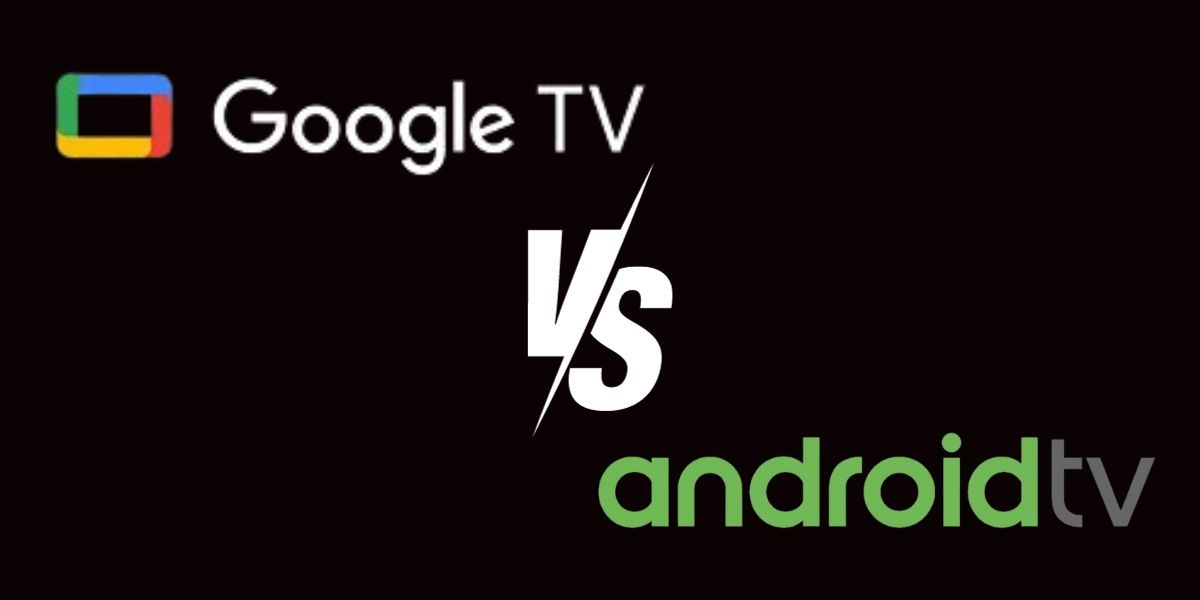Streaming media has become an integral part of our lives. As more content becomes available online, platforms like Google TV and Android TV make it easy to access this content on our televisions.
Google TV and Android TV are two smart TV platforms from Google built on the Android open-source operating system. But they have some key differences in terms of interface, features and supported devices. Let’s see how Google TV stacks up against Android TV.
Introduction to Google TV and Android TV?
Google TV is a newly introduced smart TV interface launched in 2020. It runs on top of Android TV. It provides personalized recommendations and content aggregation from various streaming apps and services. Google TV currently only runs on select Sony Bravia XR TVs, Chromecast with Google TV and some operator set-top boxes.
Android TV, on the other hand, is a smart TV platform that has been around since 2014. Unlike Google TV, Android TV offers a more basic interface focused on app streaming rather than personalization and content aggregation. Many smart TVs, set-top boxes and streaming devices from Sony, Xiaomi, TCL and others run on Android TV.
Interface and Content
The most visible difference between Google TV and Android TV is the user interface (UI) and content experience.
Google TV UI
Google TV provides a personalized home screen called For You tab which recommends movies and shows to watch from across installed apps. The Watchlist lets you bookmark movies and shows. There is also a Movies and Shows tab to browse content from different apps and a Live tab for live TV from provider apps.
The Google TV interface uses a dark background for a cinematic look. The rows and menus showcase poster artwork that changes dynamically based on content. The UI is optimized for ease of navigation using a remote control.
Android TV UI
Android TV has a more basic home screen interface comprised of app icons and customizable rows of recommendations called Channels. There is no personalized For You tab or content aggregation. The leanback launcher uses a grid of apps with options to add favorites.
The UI is bright white in color and text-focused, lacking the visual polish seen in Google TV. Navigation relies more on directional buttons rather than artwork grids.
Content Libraries
Both platforms provide access to popular streaming apps like Netflix, Prime Video, Disney+ Hotstar, YouTube etc. But Google TV offers wider content aggregation and personalization features. For instance, movies and shows from installed apps appear in a unified Watchlist and the personalized For You tab.
Android TV lacks these content aggregation features – the home screen Channels are limited to individual apps rather than content from various services.
Features
Google TV
- Personalized recommendations for movies/shows
- Content aggregation from apps into Watchlist, For You tab
- Voice search with Google Assistant
- Chromecast built-in for casting from mobile
- Support for 4K HDR playback with Dolby Vision and Dolby Atmos
- User profiles for personalized home screens
- Smart home device control
- Gaming with Google Play Store
Android TV
- Channels row for app recommendations
- Voice search with Google Assistant
- Cast functionality from Chromecast-enabled apps
- 4K HDR video support
- Limited app library compared to Google Play on Google TV
- Works with Android gaming controllers
- Smart home device control
So, Google TV offers richer personalization via profiles, smarter recommendations and wider app support from the Play Store.
Supported Devices
Google TV is currently only available on the following devices:
- Chromecast with Google TV (4K and HD models)
- Select Sony BRAVIA XR television models
- Operator set-top boxes like Dish Hopper and DirectTV Stream
Whereas Android TV powers these devices:
- Sony Bravia and Master Series Android TVs
- OnePlus TV models
- TCL Roku TVs
- Xiaomi Mi TV Stick and Mi Box
- Nvidia Shield TV box
- Smart TVs from Hisense, Nokia, Motorola and more
- Various set-top boxes and IPTV services
So, Android TV has wider availability across smart TV brands, while Google TV is still slowly rolling out.
Verdict
Google TV clearly beats Android TV when it comes to the personalized home screen, content aggregation from various streaming apps and the overall polished interface. If you want smarter recommendations and unified watchlist/playback queue across services, Google TV is the better choice.
But Android TV isn’t going away – it still powers a wide range of smart TV models across brands. The Android TV interface is simpler but gets the basics right for streaming-focused users.
Going forward, Google plans to merge the strengths of Google TV into Android TV to create a consistent, next-generation smart TV experience. So, expect more devices to either get the Google TV makeover or a unified platform that combines the best of both worlds.

